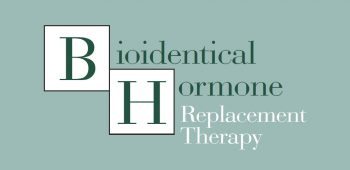
What is it and how safe is it?
Bioidentical hormone replacement therapy (BHRT) has been in the news a lot recently, thanks in part to its most famous advocate, Suzanne Somers. A long-time proponent of BHRT, the actress once told Oprah that “by replacing what I have lost in the aging process, by putting back in the exact ratio that my body requires, individualized just for me, I am experiencing the best years of my life.” But before examining the pros and cons of BHRT, it's important to review the history of traditional hormone replacement therapy.
Traditional HRT and the Women’s Health Initiative
Hormone replacement therapy (HRT) became a popular treatment for menopausal women in the ’60s and ’70s. Women complaining of midlife symptoms such as hot flashes, insomnia and night sweats as a result of decreased levels of estrogen, progesterone and testosterone during menopause were prescribed HRT. Doctors also prescribed HRT for preventing chronic diseases like coronary heart disease and cognitive impairment. Traditional HRT is made from pregnant mares’ urine. Although HRT has been referred to as natural, Dr. Christiane Northrup, author of The Wisdom of Menopause, said on Oprah that “[Synthetic hormones are] made from horse urine and are natural for a horse. But they’re synthetic for a human body.” The Journal of the American Medical Association reported that the Women’s Health Initiative, a large scale clinical trial in the ’90s, involved menopausal women taking HRT including Premarin (synthetic estrogen made from pregnant mares’ urine) or Prempro, which is a combination of Premarin and the synthetic progestin. When the study determined that taking HRT increased a woman’s chance of developing breast cancer and heart disease and increased her stroke risk, the clinical trials were immediately halted.
In an updated study, Medical News Today reported that HRT that consisted of estrogen alone decreased breast cancer risk and fractures, but increased chances of stroke, gallbladder disease, urinary incontinence and deep venous thrombosis. While taking estrogen with progestin resulted in a decrease in fractures, but an increased risk of breast cancer, lung cancer, stroke, dementia, gallbladder disease, deep venous thrombosis and urinary incontinence.
What is Natural Hormone Therapy?
Since HRT’s drop in popularity, women have been seeking alternatives such as natural hormone therapy and bioidentical hormone replacement Therapy. Natural hormone therapy means that the source of the hormones is animals, plants or minerals, but the hormones are still extracted by a pharmaceutical company; it's the source that's natural, not the process. Further, natural or plant-derived hormones such as yam-based creams are not native human female hormones. Dr. Northrup advises that taking natural hormone therapy doesn't fit the original design of women's cells and leads to various side effects. According to Harvard Health, many natural hormone supplements come from the soy plant. Soy supplements are regulated in Canada by the Natural Health Product Directorate, however, they are not regulated by the Food and Drug Administration in the U.S. because soy supplements are considered a food and FDA approval is not required. Harvard Health reports that evidence exists linking soy to an increased risk of breast tumours.
Bioidentical Hormone Replacement Therapy
Bioidentical hormone replacement therapy is also not natural. But Dr. Northrup explains that bioidentical hormones are synthesized from chemicals found in soy and yams and exactly duplicate the hormones found in humans. They are identical to the “shape of the molecule itself rather than the source of the hormone,” she says. When women enter menopause, the ovaries stop producing the three types of estrogen (estrone, estradiol and estriol), progesterone, testosterone and DHEA (an adrenal precursor to testosterone). BHRT seeks to restore some or all of these hormones to premenopausal levels.
Available by prescription, BHRT is produced by a pharmaceutical company, which produces a one-size-fits-most dose of estrogen and progesterone, or via a compounding pharmacy, which will tailor the doses of each hormone according each woman's needs. BHRT poses a problem for pharmaceutical companies Dr. Northrup explains, because they can’t patent a naturally-occurring hormone. However, as Harvard Health points out, you can patent a process and pharmaceutical companies have done that and are selling FDA-approved bioidenticals. Bioidentical progesterone and bioidentical estrogen are FDA-approved because they have been shown to relieve menopausal symptoms and reduce osteoporosis and pharmaceutical companies must use a standard dose. Harvard Health reports that “hormones from compounding pharmacies are not FDA-approved” and in fact a recent FDA random sample indicated that they were 24 per cent less potent than indicated versus FDA-approved bioidenticals being only two per cent less potent.
Hormone therapy can be administered via transdermal skin patches, some of which contain bioidentical hormones. According to Dr. Martha K. Richardson as reported in Harvard Health, the benefit of receiving hormones transdermally is the hormones don't pass through the digestive system or liver resulting in less risk of gallbladder disease and blood clots.
Benefits of BHRT
In her book I'm Too Young For This, Suzanne Somers states that as a result of taking BHRT she has increased energy, strong bones, balanced hormones and is in good health. Somers's gynecologist, Dr. Prudence Hall, who has treated patients with BHRT for the past 25 years and has appeared with Dr. Oz on Oprah, notes that a Swedish study of 28,000 women on BHRT over a 15-year period reported that the women on bioidentical hormones had lower death rates for all 12 causes of death that were evaluated. “It's only about a handful of patients that they don't work for,” Dr. Hall says.
As reported by the CBC, Dr. Richard Boroditsky of the University of Manitoba advises that if women are taking estrogen alone, they increase their chance of developing uterine cancer by 10 times. He also explains that BHRT creams are not regulated by Health Canada and advises that women who still have a uterus must take progesterone with estrogen (women who have had a hysterectomy do not need progesterone) since estrogen's function is to build cells while progesterone gets rid of unwanted cells.
Dr. Northrup says that BHRT is available by prescription at drug stores. To ensure the product is indeed bioidentical, check that the product contains estradriol or 17-beta estradriol and progesterone. If it contains medroxyprogesterone acetate, progestins, progestogens or esterified estrogens, the product is not bioidentical.
Bioidentical hormone replacement therapy may require tweaking by the prescribing doctor to ensure that the appropriate levels of estrogen, testosterone and progesterone are combined to treat an individual patient's symptoms. In fact, The North American Menopause Society emphasizes that “individualizing is still key in the decision to use [bioidentical] hormone therapy and should incorporate the women's health.” Dr. Northrup advises that taking any hormones comes with risk and says that no woman should undergo hormone replacement therapy without the supervision and care of a doctor.
BY LORI BOSWORTH
COMMENTS
YOU MAY ALSO LIKE
Newsletter Sign Up
Subscribe to our FREE newsletter for all of the latest news, articles, and videos delivered directly to your inbox each day!















































































































